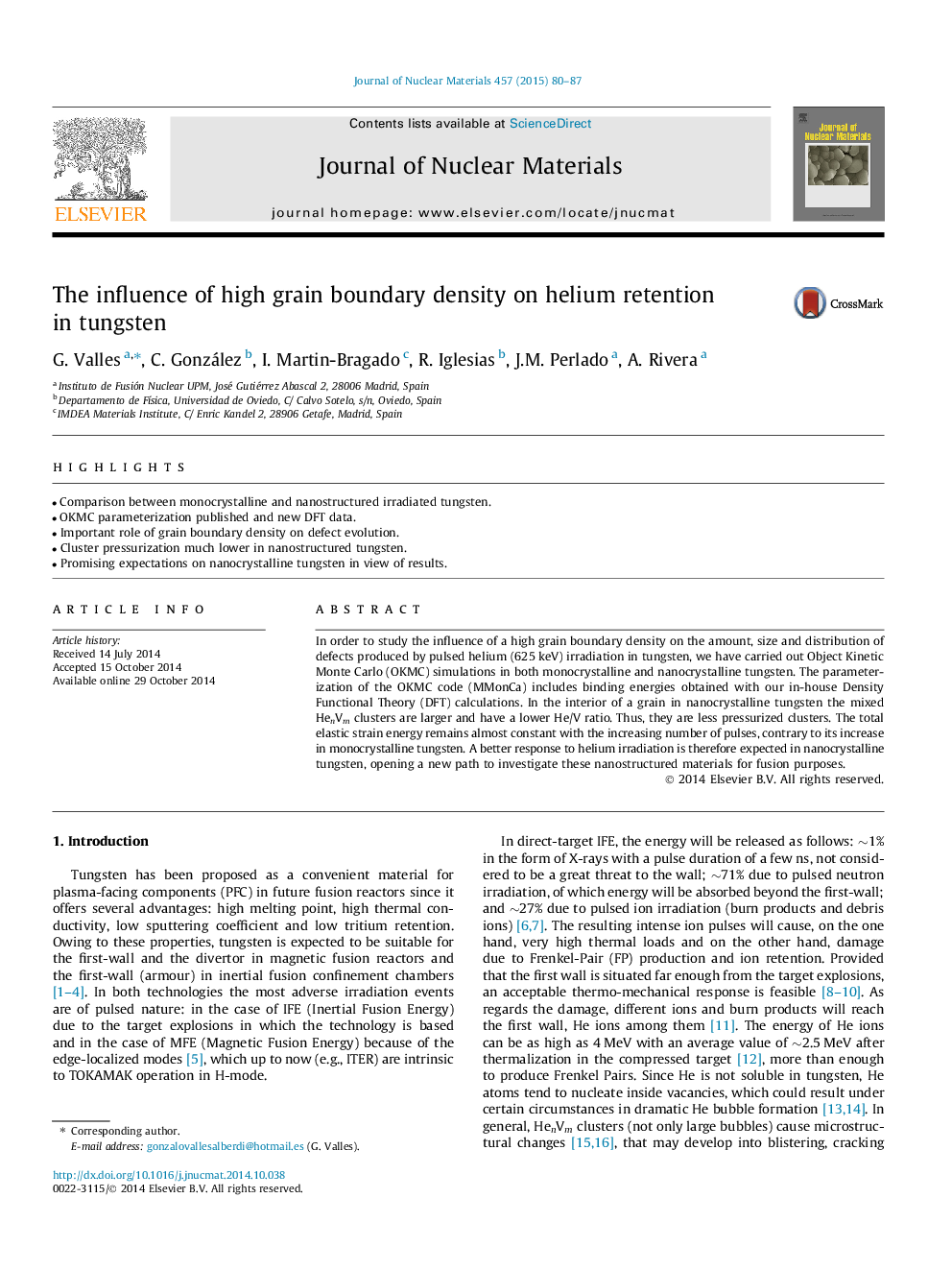| Article ID | Journal | Published Year | Pages | File Type |
|---|---|---|---|---|
| 1565029 | Journal of Nuclear Materials | 2015 | 8 Pages |
•Comparison between monocrystalline and nanostructured irradiated tungsten.•OKMC parameterization published and new DFT data.•Important role of grain boundary density on defect evolution.•Cluster pressurization much lower in nanostructured tungsten.•Promising expectations on nanocrystalline tungsten in view of results.
In order to study the influence of a high grain boundary density on the amount, size and distribution of defects produced by pulsed helium (625 keV) irradiation in tungsten, we have carried out Object Kinetic Monte Carlo (OKMC) simulations in both monocrystalline and nanocrystalline tungsten. The parameterization of the OKMC code (MMonCa) includes binding energies obtained with our in-house Density Functional Theory (DFT) calculations. In the interior of a grain in nanocrystalline tungsten the mixed HenVm clusters are larger and have a lower He/V ratio. Thus, they are less pressurized clusters. The total elastic strain energy remains almost constant with the increasing number of pulses, contrary to its increase in monocrystalline tungsten. A better response to helium irradiation is therefore expected in nanocrystalline tungsten, opening a new path to investigate these nanostructured materials for fusion purposes.
